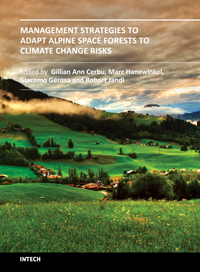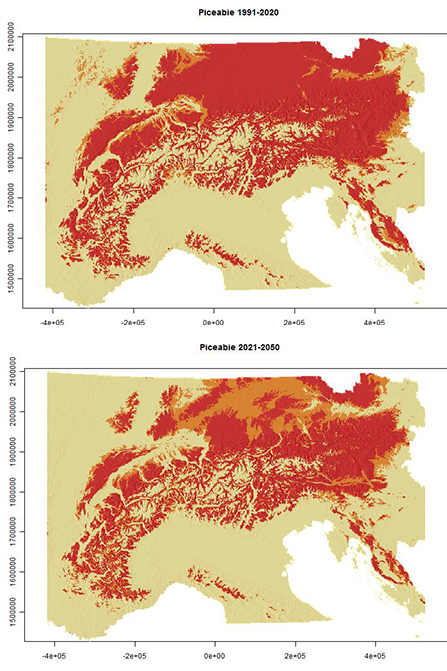Yes, we change!

The forests of the world contribute considerably to the regulation of the climate. Nevertheless, climate change is in progress and forests will not be able to prevent it. The window of time for mitigation has closed. Adaptation is needed today.
Within the framework of the Interreg-Alpine Space Project MANFRED, twenty institutions across seven countries address the question of how mountain forests must adapt to the risks of climate change.
It is especially important in mountain regions that the multifunctionality of the forest stays intact in the face of climate change. However, not every undesirable development in forests should be interpreted as an effect of climate change. The condition of forests can also be improved through the optimization of management.

In the course of MANFRED; forest management, climate change, future distribution of trees, future pest pressure, and protection from natural hazards have been examined. The basis for cross-border monitoring has been developed, which enables the early detection of the spread of pests.
Productivity of different provenances
The future distribution of the main tree species can be simulated using data from the Austrian National Forest Inventory. Evaluation of the productivity of spruce of different provenances is possible using data from long-term studies of the Institute of Forest Genetics. Recommendations for spruce cultivation under changing climatic conditions can thereby be made.
The Programme CALDIS, (Ledermann, Kindermann) from the Institute of Forest Growth and Silviculture simulates the productivity of forests under different climate scenarios. Due to large uncertainties about the rate and magnitude of climate change, the recommendations made for adaptive forest management are very conservative. A variety of tree species is important for the stability of forests, in order to spread any risk.
Measures of adaptive forest management
The spread of insect pests can be contained, if invasive pest species are recognized early and if damaged timber is immediately removed. One recommendation, to abandon the presently used main tree species, cannot be advocated due to current uncertainties.
The regulation of game is paramount to all adaptive forestry measures. The desired mixed stands can only be developed if efforts are not undermined by browsing damage.
Order option
Management Strategies to Adapt Alpine Space Forests to Climate Change Risks